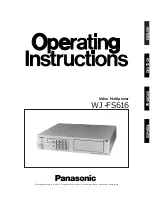DS3112
102 of 133
The instruction shifted into the Instruction shift register is latched into the parallel output on the falling
edge of JTCLK as the controller enters this state. Once latched, this instruction becomes the current
instruction. A rising edge on JTCLK with JTMS low will put the controller in the Run-Test-Idle state.
With JTMS high, the controller will enter the Select-DR-Scan state.
11.1.11 Capture-IR
The Capture-IR state is used to load the shift register in the Instruction register with a fixed value. This
value is loaded on the rising edge of JTCLK. If JTMS is high on the rising edge of JTCLK, the controller
will enter the Exit1-IR state. If JTMS is low on the rising edge of JTCLK, the controller will enter the
Shift-IR state.
11.1.12 Shift-IR
In this state, the shift register in the Instruction register is connected between JTDI and JTDO and shifts
data one stage for every rising edge of JTCLK towards the serial output. The parallel register, as well as
all Test registers remain at their previous states. A rising edge on JTCLK with JTMS high will move the
controller to the Exit1-IR state. A rising edge on JTCLK with JTMS low will keep the controller in the
Shift-IR state while moving data one stage through the Instruction shift register.
11.1.13 Exit1-IR
A rising edge on JTCLK with JTMS low will put the controller in the Pause-IR state. If JTMS is high on
the rising edge of JTCLK, the controller will enter the Update-IR state and terminate the scanning
process.
11.1.14 Pause-IR
Shifting of the Instruction register is halted temporarily. With JTMS high, a rising edge on JTCLK will
put the controller in the Exit2-IR state. The controller will remain in the Pause-IR state if JTMS is low
during a rising edge on JTCLK.
11.1.15 Exit2-IR
A rising edge on JTCLK with JTMS high will put the controller in the Update-IR state. The controller
will loop back to the Shift-IR state if JTMS is low during a rising edge of JTCLK in this state.
11.1.16 Update-IR


















